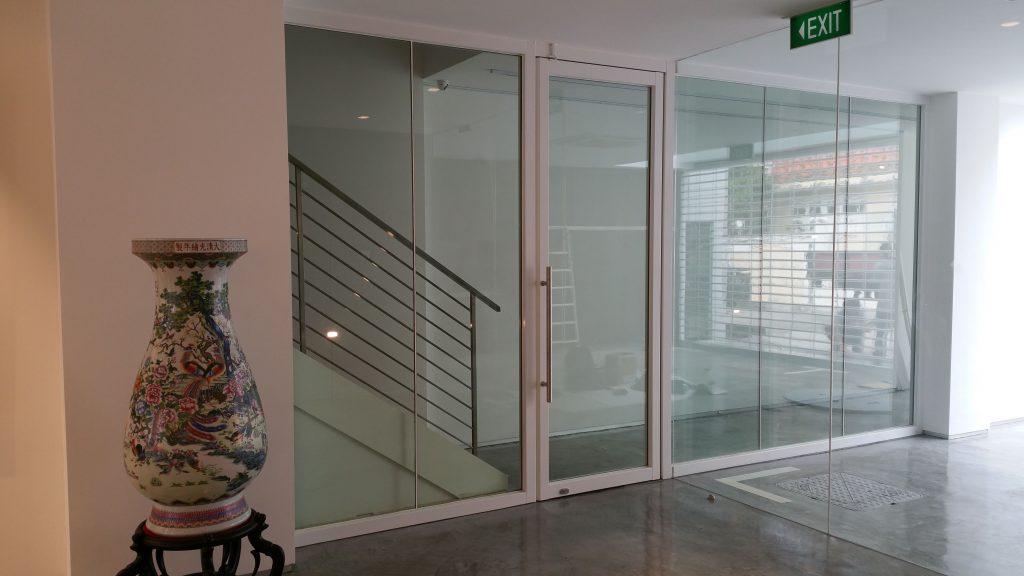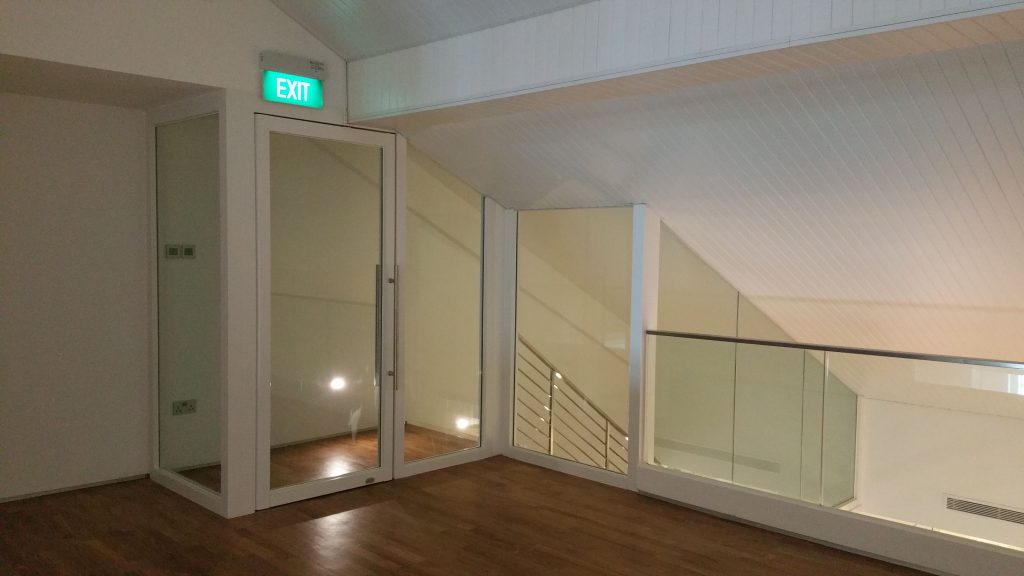Fire rated glass is a popular building material that offers passive defence against the spread of fire, smoke and radiant heat. While it is deemed an essential part of building safety, there are still lots of myths and misconceptions surrounding this special building material that need to be debunked. Let us take a closer look at the fire rated glass myths and let us debunk them one by one.

Myth #1: Fire rated glass doesn’t break
Many people think that fire rated glass is indestructible and won’t shatter during a fire. While this idea is pretty much understandable, this is one of the most common fire rated glass myth. Yes, fire rated glass is indeed designed to resist high temperatures and act as a barrier to stop a fire from spreading, it is simply not unbreakable.
When there is a fire outbreak, fire rated glass may be exposed to high temperatures and thermal stress which can eventually break it. It’s just that, even when it is broken, fire rated glass keeps its integrity and still helps in containing fire and smoke. With this, people can still buy time to leave the building safely and allow the emergency responders to evaluate the situation.
It is also important to note that there are several degrees of impact resistance available for fire rated glass. Some fire rated glass is engineered to endure elevated impact forces, rendering it appropriate for locations where potential debris or human contact may pose a risk. Expert advice is required when choosing the right impact-resistant fire rated glass for any specific application.
Myth #2: Fire rated glass is always opaque
Another common misconception about fire rated glass is it’s generally opaque, obstructing vision. Although certain fire rated glass products are opaque by nature, considerable technological developments have produced clear and transparent fire rated glass.
Visibility and fire safety are two benefits of transparent fire rated glass systems. This is especially important in an emergency because it makes it easier for the residents and emergency responders to see through the glass, assess the situation and find an escape route. Transparent fire rated glass has given architects and designers new options for creating safe and aesthetically pleasing environments.
Fire rated glass is usually produced from specialised materials and goes through particular production processes in order to achieve transparency. Through these procedures, the glass is guaranteed to keep its ability to withstand fire while still allowing light to travel through. It is crucial to seek professional advice and choose transparent fire rated glass that meets all safety and fire regulations.
Myth #3: Fire rated glass provides insulation
The primary function of fire rated glass is to prevent the spread of flames, smoke, and radiant heat. It is necessary to remember that conventional insulated glass units (IGUs) offer a higher degree of thermal insulation than fire rated glass.
Fire rated glass can heat up during a fire and radiate heat onto the surrounding area. In addition to fire rated glass, additional measures like curtains, blinds or other types of shading can be used to increase thermal efficiency if thermal insulation is a problem. To make sure that the appropriate degree of thermal insulation is reached, it is essential to take into account the particular needs of the building and seek professional advice.
To improve both fire protection and thermal insulation, fire rated glass and insulated glass units (IGUs) may occasionally be combined. These kinds of assemblies enhance the glazing system’s total thermal performance by having several glass panes divided by an air- or gas-filled gap. This combination is frequently employed in settings where energy efficiency and fire safety are major factors.

Myth #4: All fire rated glass has the same fire rating
Another popular fire rated glass myth is that all fire rated glass products It is a myth that all fire rated glass goods provide the same degree of fire protection. Fire rated glass comes in a variety of fire ratings. A given glass system’s fire rating is determined by a number of variables, including the glass’s installation, frame system and composition.
In order to determine its capacity for fire resistance, fire rated glass is tested and certified in accordance with accepted criteria. These tests gauge how well the glass can withstand heat radiation, smoke and flames for a predetermined amount of time. Fire-rated glass may have fire ratings of 20 minutes, 45 minutes, 60 minutes, or even longer times, contingent on the test findings.
To make sure the right fire rated glass is chosen for a particular application, it is crucial to choose fire rated glass after speaking with fire safety experts and following local building rules. The fire rating ought to be in accordance with the necessary degree of fire resistance and adhere to the relevant regulations.
It is also important to remember that the glazing system’s overall installation and frame system, in addition to the glass itself, affect the system’s fire rating. Achieving the intended fire rating depends significantly on the glass’s compatibility with the frame system and on using the right installation methods. Working with experts who can offer advice on choosing the right fire rated glass and guaranteeing the correct installation is crucial.
Myth #5: Fire rated glass is expensive
There is also a common misconception that fire rated glass is excessively expensive. While fire rated glass may cost more than regular glass, the price varies depending on several factors, including the size, design requirements, manufacturer and supplier.
In the recent years, the industry has witnessed a decline in the price of fire rated glass due to improvements in manufacturing techniques and heightened marketing competition. Also, the expense of fire rated glass as a whole needs to be weighed against its vital role in safeguarding property and occupant safety in the case of a fire.
It is recommended that you speak with several manufacturers and suppliers in order to obtain precise pricing information that is tailored to the particular needs of your project. It is practical to get fire rated glass solutions that provide the required level of safety without going over budget by comparing quotations and looking into various possibilities.
It is also important to factor in potential insurance premium savings when evaluating the price of fire rated glass. Many insurance providers give lower rates to buildings with adequate fire safety precautions because they understand how important fire-rated glass is in reducing the risk of a fire. Building owners may recover their original investment through long-term insurance savings by opting for fire rated glass.
Elevate your building’s safety standards
As we dispel these common myths about fire rated glass, it becomes more apparent that this special building material is important for improving compliance and safety. Precision is important when choosing, installing and maintaining fire rated glass. For all your fire rated glass needs, consider reaching out to VJF Systems.
VJF Systems is at the forefront of providing innovative fire rated glass solutions that put safety and aesthetics first. With a commitment to quality and innovation, we guarantee that your building is equipped with the right fire rated glass to meet specific requirements and regulations.
Refrain from letting misinformation guide your decisions when it comes to fire rated glass. Take a pre-emptive step towards safety and compliance and talk to us today. Whether you are an architect, builder or property owner, collaborating with us ensures you have a reliable ally for all your fire-rated glass needs. Elevate your building’s safety standards – contact VJF Systems now for expert guidance and top-tier fire-rated glass solutions.fire

